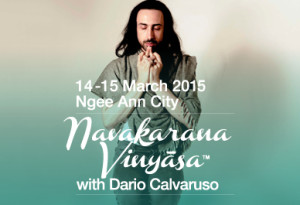अभ्यासवैराग्याभ्यां तन्निरोधः ॥१२॥
abhyāsa-vairāgya-ābhyāṁ tan-nirodhaḥ ||12||
The total control (of mental the operations) is achieved through practice (discipline) and non-attachment.
तत्र स्थितौ यत्नोऽभ्यासः ॥१३॥
tatra sthitau yatno-‘bhyāsaḥ ||13||
Practice is endeavour in virtuous conduct.
स तु दीर्घकाल नैरन्तर्य सत्कारासेवितो दृढभूमिः ॥१४॥
sa tu dīrgha-kāla nairantarya satkārāsevito dṛḍha-bhūmiḥ ||14||
That (practice should be) performed for a long time, uninterruptedly and with total dedication (till) is firmly established.
दृष्टानुश्रविकविषयवितृष्णस्य वशीकारसंज्णा वैराग्यम् ॥१५॥
Dṛṣṭa-anuśravika-viṣaya-vitṛṣṇasya vaśīkāra-saṁjṇā vairāgyam ||15||
Non-attachment is consciousness subjugation (self-mastery) and freedom from desire for sense objects seen or heard.
तत्परं पुरुषख्यातेः गुणवैतृष्ण्यम् ॥१६॥
tat-paraṁ puruṣa-khyāteḥ guṇa-vaitṛṣṇyam ||16||
The highest (non-attachment) which comes from
knowledge of the Self is freedom from desire of all natural manifestations.
वितर्कविचारानन्दास्मितारुपानुगमात्संप्रज्ञातः ॥१७॥
vitarka – vicāra – ānanda – asmitā-rupa – anugamāt – saṁprajñātaḥ ||17||
Saṁprajñāta (saṁprajñāta samādhi or spiritual absorption where consciousness contains objects) is of four types (in order of progress): gross, subtle, bliss, and “I-ness”.
विरामप्रत्ययाभ्यासपूर्वः संस्कारशेषोऽन्यः ॥१८॥
virāma – pratyaya – abhyāsa – pūrvaḥ saṁskāra – śeṣo-‘nyaḥ ||18||
By total control of the mind achieved through discipline the other (Asaṁprajñāta samādhi – where consciousness contains no object) it is attained (and) only subconscious impressions remains.
भवप्रत्ययो विदेहप्रकृतिलयानम् ॥१९॥
bhava – pratyayo videha – prakṛti – layānam ||19||
(If discipline is not combined with total non-attachment the aspirant) will reach a state of disincarnate being or merges with the forces of Nature.
श्रद्धावीर्यस्मृति समाधिप्रज्ञापूर्वक इतरेषाम् ॥२०॥
śraddhā – vīrya – smṛti samādhi – prajñā – pūrvaka itareṣām ||20||
It (Asaṁprajñāta samādhi) is very near for those having faith, vigour, memory and (have attained) spiritual absorption (saṁprajñāta samādhi).
तीव्रसंवेगानामासन्नः ॥२१॥
tīvra – saṁvegānām – āsannaḥ ||21||
It (Asaṁprajñāta samādhi) is (also) near for those who practice intensively.
मृदुमध्याधिमात्रत्वात्ततोऽपि विशेषः ॥२२॥
mṛdu-madhya-adhimātratvāt-tato’pi viśeṣaḥ ||22||
(Practice) varies according to the level (of commitment): mild, medium and intense.
quot. from Navakaraṇa Vinyāsa ™ – transliteration and translation by Dario Calvaruso © .


